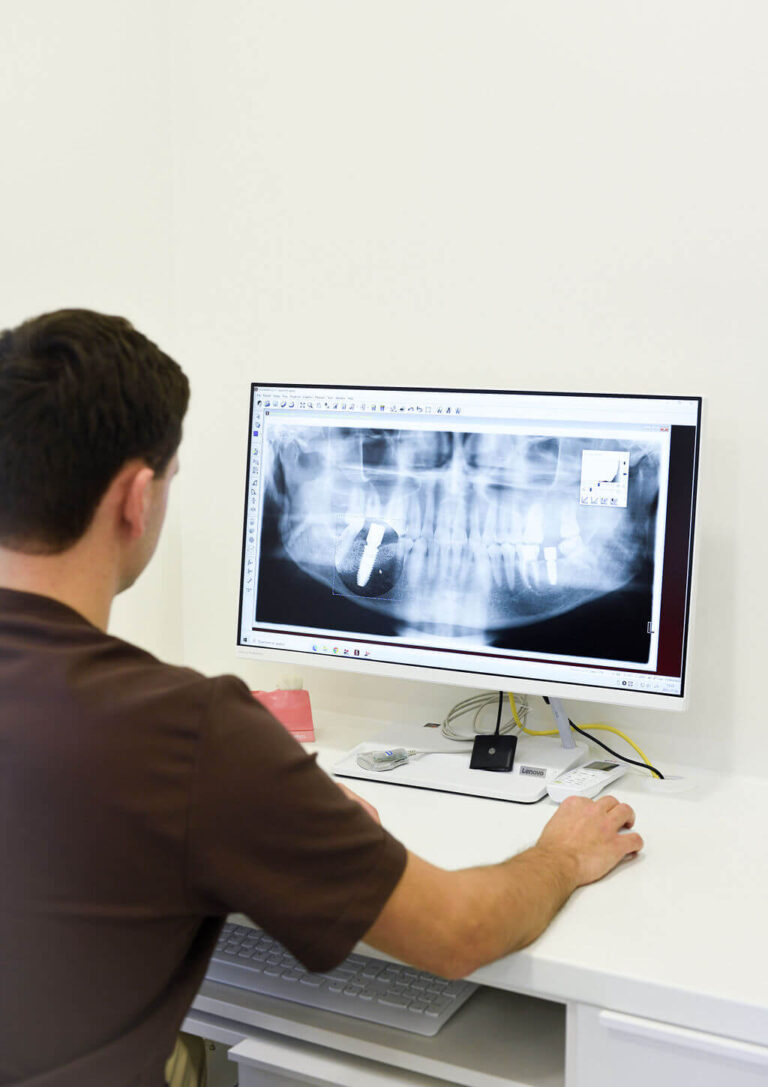“If I had known, I wouldn’t have waited so long,” sighs more than one patient after an implant procedure. It is often fear that makes them delay going to the dentist and hide the empty spaces between their teeth with their hand or half-closed lips.
Delays have their price
A 34-year-old woman who lost a molar tooth did not think twice about losing it. But when she had to have several more extracted, especially in a more visible place, she thought about getting dentures.
A dental consultation has left me confused about which to choose – removable dental plates or implants? What is more important – a beautiful smile or the needs of the family, which would be partly affected by the new teeth?
However, implant dentists speculate that people would be more likely to open the door if they thought beyond the aesthetic side of a beautiful smile. When you lose a tooth, bone starts to melt away in the empty space. This process is most intense in the first year.
This is why dentists urge people to take their time and seek a denture or implant as soon as possible after a tooth extraction. This is all the more so nowadays, as the situation is considerably facilitated by immediate implant placement, which is particularly important in the case of front tooth loss and can be carried out very quickly.
Simonas Bankauskas, Chief Physician at CLINIC | DPC, says: “Losing more teeth can eventually change the shape of the face, cause wrinkles and make a person age faster. Tooth loss also makes it harder to chew food. Although after a while people learn to chew with the teeth they have, the quality of the chewing itself is severely affected. More often than not, poorly chewed food eventually affects the stomach, which can lead to very serious illnesses. In addition, if a tooth is missing for a prolonged period of time, the adjacent teeth move into the misalignment, resulting in a deformed bite. After a while, the idea of getting your smile back can lead to problems, the prosthetic process itself can take longer than expected, and the costs increase.”
Plate or implants?
Another dilemma faced by people who have lost teeth is the hesitation about whether to choose removable dental plates or implants. The latter sometimes scares people with its higher price, but those who have tried a dental plate often regret it later.
“Many patients admit that they would have preferred to go for implants right away. Although removable dentures are cheaper at first glance, they also cause more discomfort. These dentures wear out and need to be replaced again after a while. In addition, the adjacent teeth need to be prepared before removable dentures can be placed, by grinding them. Implants, on the other hand, not only prevent such an unpleasant procedure, but also last for the rest of your life. There is a reason why reliable, certified manufacturers give them a lifetime guarantee”, says Dr. S. Bankauskas.
When working with people, dentists at CLINIC | DPC are always interested in what is worrying their patients. For many, dental plaque is the first thing that creates a feeling of insecurity. The fear is that it might just fall out when talking, laughing or eating. Some people complain that food residues under the plate are annoying and cause bad breath. When eating, the plaque can start to stick, irritate the mucous membranes and sometimes even rub wounds in the mouth.
Implant-supported dental crowns are not inferior to natural teeth, so you can chew even hard food without fear. In addition, chewing on implants puts a load on the bone, which prevents further loss of bone. Unfortunately, dental plaque does not prevent this process.
“In fact, people who have lost their teeth no longer have to suffer as much as before. And there is a wider and better choice of treatment methods and systems. The world’s leading and most effective method of tooth restoration so far is the so-called All-on-4 method. This technique makes it possible to restore a single jaw on four implants, even in very difficult clinical situations. The technique goes well beyond the four implants. Firstly, it avoids any bone augmentation procedures, which is very important because bone augmentation is a very tedious process for the patient. During the procedure, temporary teeth are immediately placed, which function perfectly as real teeth throughout the healing period, so that patients can chew immediately after the procedure,” says the implantologist.
Usually, after half a year, the patient comes back to have permanent teeth placed, which are no different from natural teeth and their appearance, so the person does not feel any discomfort when smiling or communicating. He regains his self-confidence.
A brush is not enough
After dental implants, a person enjoys a beautiful smile and any remaining problems are forgotten. However, S. Bankauskas reminds us that restored teeth must be cared for as carefully as our own.
Daily dental hygiene: brushing, flossing and using mouthwash. It is recommended to have professional oral hygiene twice a year. After the implant placement, the patient should visit the dentist every three months and at least twice a year thereafter.



